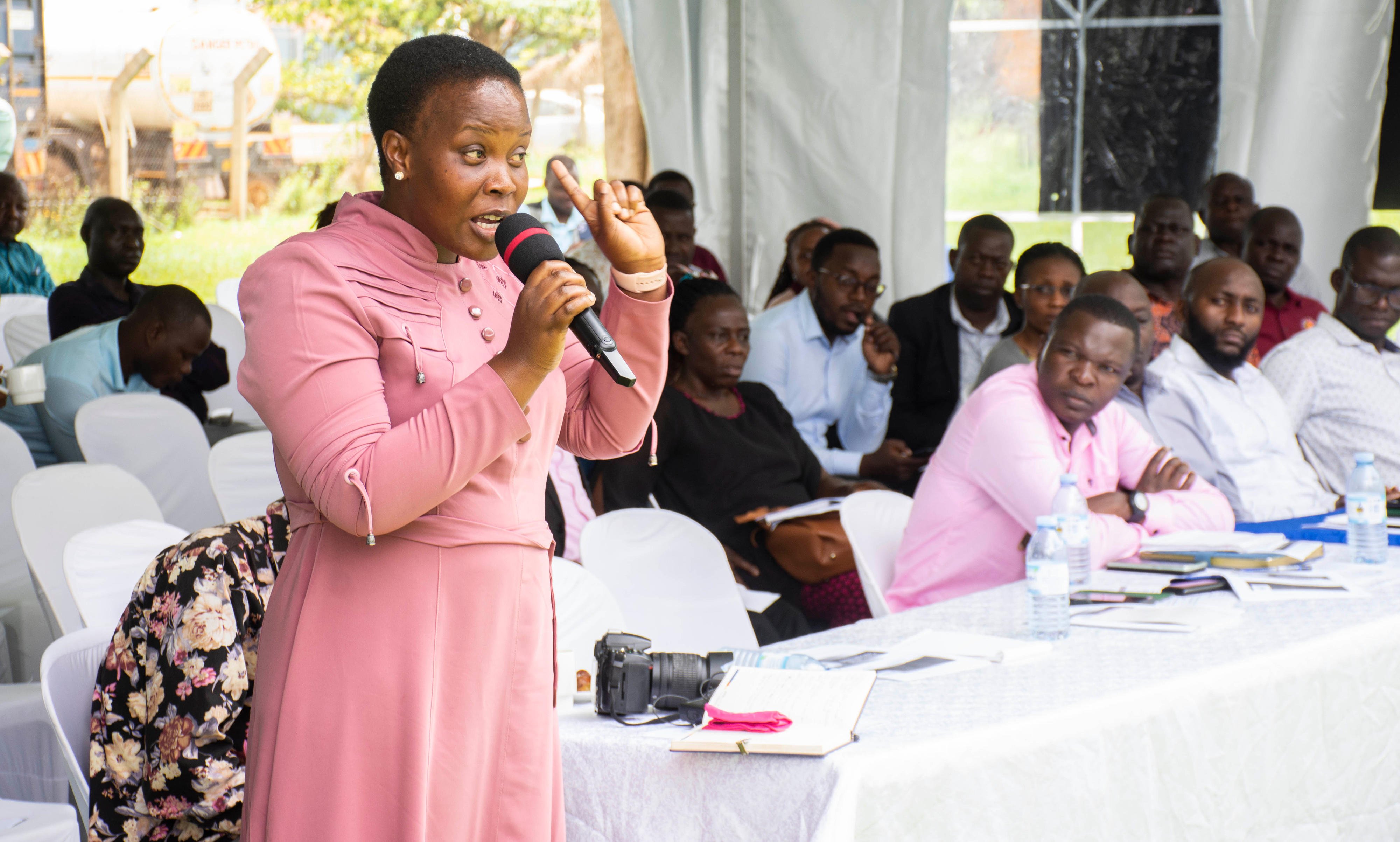Govt issues new maize aflatoxin guidelines

The secretary of Rubaga Maize Millers Association, Ms Sarah Nanono Kaweesi, speaks during a sensitisation meeting on initiatives to improve the quality of maize grain at Uganda National Bureau of Standards head offices in Wakiso District on September 13, 2023. PHOTO/ ISAAC KASAMANI
What you need to know:
- The exporter is responsible for keeping and maintaining order and security of the Unbs-sealed consignment.
Uganda National Bureau of Standards (UNBS) has issued measures for both farmers and maize exporters to adhere to in a bid to control aflatoxins in maize seeds and maize flour.
“We came up with these guidelines because we are mandated to do it, to curb illicit activities in the sector, to protect the health and safety of consumers, to improve our international relations with neighbouring countries, and ensure trade facilitation or meet requirements of another country,” Mr Gaston Kironde, the senior surveillance officer at UNBS, said.
He made the remarks while meeting maize millers, exporters, and farmers yesterday in Bweyogerere in Wakiso District.
Mr Kironde added that they want to enforce compliance in the trade sector and also sensitise key stakeholders.
“The problem of aflatoxins started in March 2019. We received some media alerts about food poisoning in Amudat District. Then in April 2020, during the Covid-19 pandemic, the government decided to give us relief food. So people started consuming the food. UNBS was [able to] impound more than 100 tonnes of maize flour. Between May and June, the same problem was raised in South Sudan where they impounded more than 90 trucks from Uganda and the issue was aflatoxins in maize grain and maize flour,” Mr Kironde said.
Aflatoxins are toxins produced by a fungus that grows on certain crops such as maize and ground nuts, which compromise the safety and quality of food and feeds.
Mr Paul Mwambu, the commissioner for crop and inspection satisfaction at the Ministry of Agriculture, Animal Industry and Fisheries (MAAIF), said an exporter must buy quality products from farmers.
“We [exporter and ministry] have a role to play in ensuring that farmers do the right thing. You can have some level of price discrimination then farmers will do the right thing. For example, if the whiteness of the maize does not meet this code, there are molds, or pests, the moisture content is not right, then reject it, so that the farmer starts looking for knowledge or how they can improve their products,” Mr Mwambu said.
Ms Carol K Nankinga, the assistant commissioner in the Department of Crop and Inspection Satisfaction at MAAIF, said contamination of aflatoxin occurs in the maize value chain that is from the farm to the final consumer.
“Poor harvesting, handling, storage practices such as storing wet crops is one of the causes of growth of moulds that cause accumulation of aflatoxins and once a product is infested with aflatoxins, they are rendered harmful and unfit for consumption,” Ms Nankinga said.
Mr Ismail Ssempijja, a farmer, said the government should sensitise farmers about aflatoxins.
“The burden is being shifted to exporters yet farmers are also a factor in this aflatoxin problem, so they should all be sensitised on handling, storage of products etc or even give farmers aflatoxin-resistant seeds for planting,” he said.
Aflatoxins have been linked to liver cancer, child stunting, malnutrition, and impaired growth in humans.
Some Guidelines
• Identify a yard where UNBS can sample products
•Provide sealable trucks for safe custody of the sampled products. • Every exporter shall be required to present a copy of ownership of the consignment, so every exporter shall have a valid UNBS certification permit.
• Every exporter must have his or her product packaging clearly and indelibly labelled and traceable with the name of product, name and address of the manufacturer or packer brand name or registered trademark, batch, weight in SI units, storage instructions, the statement “food for human consumption”, country of origin, date of manufacture, date of expiry and instructions for disposal of used package.
• The certificate of the product should be of the right contents.
• The cost of laboratory analysis of the product samples shall be borne by the client. The sampling process takes place between 9am to 1pm so as to create sanity so that traders learn to keep time and do not come in the wee hours rushing to take their samples.





